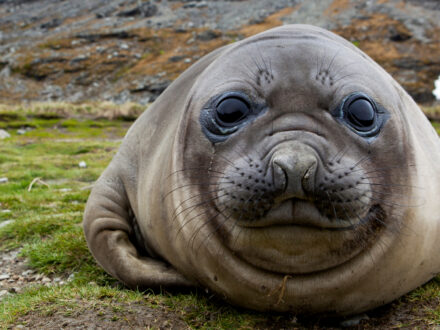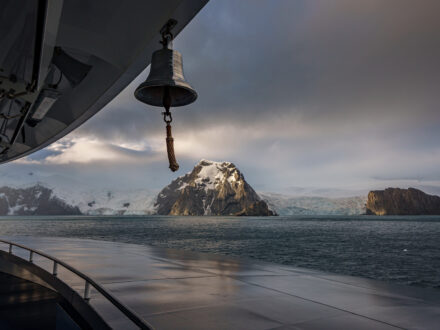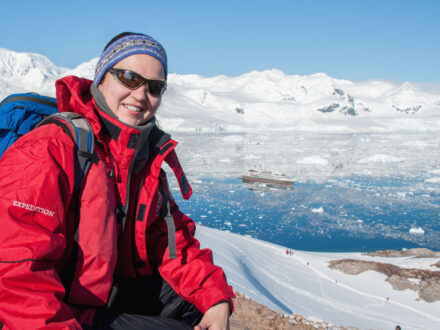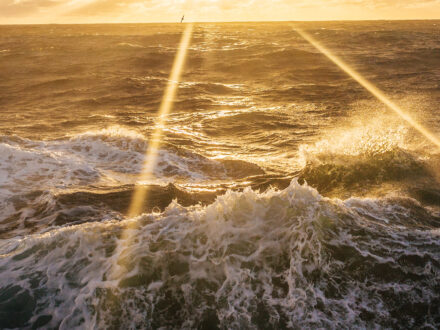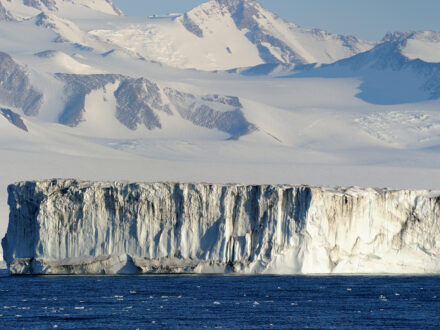How Much Does It Cost To Go To Antarctica?
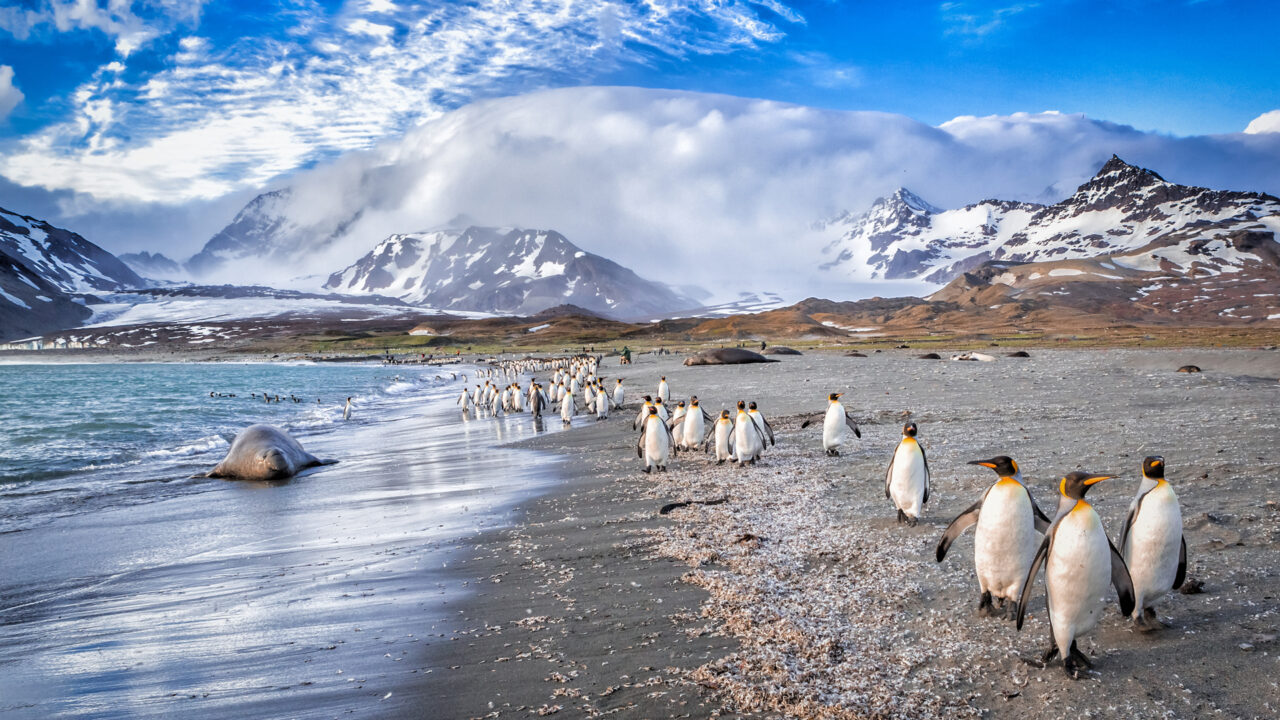
- Why Is It So Expensive to Go to Antarctica?
- Antarctica Cruise Cost
- What Factors Affect Antarctica Trip cost?
- When You Book
- When You Travel
- Where You’re Coming From
- Where You Sail From
- How Much Does it Cost to go to Antarctica from Argentina?
- How Much Does it Cost to go to Antarctica from Australia or New Zealand?
- How Long and How Far You Sail
- How Far South You Go
- Whether You Fly the Drake Passage or Not
- What Vessel You Travel On
- Which Cabin Category You Choose
- Who You Travel With
- Whether You Want to Add on Any “Adventure Options”
- Who You Book With? (FALSE!)
- Clothing & Other Costs to Bear in Mind
- Total Antarctica Travel Cost
- Is Price Really a Good Criteria for Choosing the Right Antarctic Trip?
Can you put a price on a trip to Antarctica, one of the most profound and authentic experiential adventures you’ll have in your entire life? It turns out “Yes”. While many consider an Antarctica trip to be a ‘priceless’ experience, Antarctica travel does incur a significant outlay, and not solely from the cost of your Antarctica cruise, albeit the most notable contributing factor.
Here we’ll explore the reasons why Antarctica expeditions cost so much, explain all the factors that may affect the cost of the Antarctica trip that you want to experience, and ultimately help you calculate (approximately) how much it may cost you to go to Antarctica based on these factors. Just bear in mind that, despite how expensive you may perceive a polar adventure to be, we’ve never had anyone return from Antarctica who didn’t think that it was well worth the investment.
Please note that all the estimated costs mentioned below are in USD.
Some things are priceless
Why Is It So Expensive to Go to Antarctica?
There’s no way around it, any trip to Antarctica is expensive, especially when you compare the cost of an Antarctica cruise to conventional cruises. But there are a multitude of reasons why the expense of Antarctica travel, relatively speaking, isn’t as exorbitant as it at first seems, not least the unparalleled remoteness of the destination, the challenging logistics involved in getting there, and the requisite permits, expertise and equipment involved in operating cruises (safely!) in such a pristine, ice-laden environment.
Ice-strengthened ships are very expensive to build and maintain, and then there’s the actual fuel to run the ship which surprisingly represents as much as 50% of total operating costs in some cases. In 2011 new fuel oil standards came into force banning the burning of heavy fuel oil and requiring ships to use lighter, cleaner fuels such as Marine Gas Oil while in the Antarctic Treaty Area (the sea south of 60° South latitude). Already expensive, such high-grade fuels can cost considerably more in such remote areas where supply is scarce and demand high, making refueling prohibitively expensive for larger vessels.
Other regulatory hurdles associated with conservation also add extra cost so that the traveler’s wallet takes the toll rather than the Antarctic environment. For example, each journey requires a detailed environmental impact assessment to be made (in the U.S. this is made to the Environmental Protection Agency) to verify that any planned activities will have less than a minor or transitory impact on the Antarctic’s (and any dependent or associated) ecosystems.
After fuel, crewing costs represent the next highest operating cost at around 30%. Crew numbers can easily total more than 80 people, including a number of costly experts, naturalists, and knowledgeable expedition leaders, all of whom need to be paid and also accommodated on board. With ship capacities of fewer than 200 guests, this makes the crew to passenger ratios—and the split of their wages—much higher than on traditional cruises. What’s more, expedition crew understandably earn much higher wages than the industry average because they need to be more specialized, exceptionally well trained, and experienced—IAATO expects at least 75% of expedition teams to have previous Antarctic experience.
Polar expedition cruises by their very definition operate in remote, inhospitable and potentially hazardous areas, often inadequately surveyed or unsurveyed, and so not only do crew need to be exceptionally experienced and well trained as we’ve already mentioned, but furthermore, the insurance premiums associated with such cruises are understandably far higher than for ships operating close to home in familiar waters.
Provisioning in polar regions, away from major ports, also presents additional (and expensive) logistical challenges. Whereas your average cruise ship is built for short cruises of perhaps a week to ten days, expedition vessels often need to travel for three weeks or more (certainly those Antarctic cruises from Australia and New Zealand) without the opportunity to stock up. This means a larger proportion of space is dedicated to storage rather than fare-paying passengers than on conventional ships, whether that be for fuel, food, equipment or technical consumables.
So while Antarctica cruise costs do appear expensive, certainly in comparison with more traditional river or ocean cruises, once you take into consideration all the additional operational hurdles—from logistical constraints and specialist staffing requirements to paramount safety aspects—a more pertinent question might be, “how do they do it for the money?”.
High-end Antarctica Travel
Antarctica Cruise Cost
Expect to pay a minimum USD$6,000 per person for a classic Antarctica cruise. Prices rise quickly from there, with average prices more in the USD$10,000 range, and high-end berths on luxury ships costing up to four times that much.
That equates to between USD$600 – USD$3,600 per person per day, with the average passenger needing to budget around USD$1,000 per person per day of their cruise, inclusive of all meals, some drinks and most shore excursions. Less expensive tickets often leave out key items such as required gear which can be costly.
Here is an approximate price guide for the most popular itinerary types with prices displayed per person in USD:
Classic Antarctica Peninsula cruise (10 – 11 days): $6,000 – $14,000
Antarctica Fly-Cruise (6 – 8 days): $11,000 – $27,000
Antarctic Circle cruise (12 – 14 days): $8,000 – $18,000
Falklands, South Georgia & Antarctica cruise (18 – 23 days): $12,000 – $25,000
Weddell Sea cruise (12 – 20 days): $10,000 – $30,000
Ross Sea cruise (25 – 35 days): $18, 000 – $27,000
Flights to Antarctic Interior & South Pole (7 – 9 days): $50,000
What’s Typically Included ?
On any Antarctic voyage the following inclusions, optional and additional costs typically apply, but these will be dependent upon your choice of ship and itinerary:
Included
- Accommodation on full board basis
- All guided landings and excursions
- A programme of lectures by leading experts
- Loan of a pair of rubber boots
- Complimentary parka jacket (to keep)
Optional Extras on Select Departures
- Camping in Antarctica
- Sea kayaking
- Other adventure activities such as snowshoeing, camping and photography workshops
- Reserved seating on charter flights for fly-cruises to Antarctica
Additional Costs Not Included
- Return flights to and from port of embarkation
- Pre- and post-voyage hotel accommodation
- Travel insurance
- Drinks
- Souvenirs
- Internet data cards
- Discretionary crew tips (approx. USD$15-20 per person per day)
What Factors Affect Antarctica Trip cost?
When exploring your Antarctic travel options, there are several fixed costs and many variable ones that can affect the overall cost of your trip. Each variable cost, which we’ll look at now, can act as a lever to adjust the price you’ll pay for your polar adventure, with some more easily pulled than others!
When You Book
Cruises for a season become available to book two years in advance, so there is a wide window of opportunity to purchase a polar voyage. But how far in advance should you book, and is there any benefit to leaving it to the last minute? Unlike large cruise ships with almost unlimited availability, the small expedition ships that frequent Antarctica don’t suffer the same difficulties in selling their inventory, so last minute discounts are few and far between. In fact, the more popular, less expensive berths tend to sell out before all others, and with some operators now moving towards dynamic pricing models (like airlines), it’s quite likely that the longer you leave it, the more you will pay.
Instead, the best deals are certain to be had by those willing to commit early, with Antarctic boat operators commonly offering early booking incentives in the region of 25% – 35% off (around USD$1,000 – USD$1,500) per person, typically when booking ten or more months in advance, with smaller discounts of 10% – 15% still possible when booking as late as April or May for the upcoming season.
Note that not all ships offer an early booking incentive, and these offers always have strict deadlines. The rewards for booking in advance aren’t just limited to cost savings though. Booking early also ensures you have a greater chance of securing your preferred ship, cabin, and itinerary rather than sifting through limited options at the last minute. This is especially true for those seeking the rarer single, triple or quadruple cabins available.
A Note on Deposit Requirements
Does this cost need paying all in one go? Well that depends on how far in advance you are booking your trip. If your cruise departs sooner rather than later, usually within 120 days, then you’ll be expected to cough up the entirety of the total amount due in one fell swoop. However, should your cruise depart beyond that timeframe, typically a deposit of 25% will need to be made to secure your booking, with the balance payable 120 days prior to departure. Perhaps another reason not to book right at the last minute—even if there is the slim chance of a bargain—so you can spread the cost somewhat.
When You Travel
With the Antarctic cruising season during the austral summer being so short, you might be forgiven for assuming a flat cruise rate applies irrespective of when you travel. But you’d be mistaken. When you travel can affect the cost of your Antarctica cruise by anywhere between 10% – 25%.
This price differential is predominantly dictated by customer demand—albeit directly linked to the weather and wildlife conditions experienced on the White Continent—with the lowest prices available on the less popular early season (November) and late-season (March) cruises. Despite these collective ‘shoulder’ seasons still being great times to experience Antarctica—and cheaper flights also being more readily available at this time—most travelers prefer to travel in the ‘high’ season (December – February) when Antarctica’s weather and wildlife are considered at their best, and are happy to pay a premium for them.
We’re often asked whether high season prices are worth the extra outlay. In our opinion, the longer days, more stable weather, and more active wildlife during high season do justify the 10-25% higher price, but it very much depends on your personal preferences. For example, keen photographers may prefer November for the heady cocktail of soft light, spectacular skies and heavy ice conditions, while whale watching enthusiasts will often wait until March when cetacean sightings are more commonplace.
Where You’re Coming From
Your point of origin is also a factor. Not in the sense that you’ll pay more for a cruise depending upon your nationality or country of residence, although the currency you choose to pay in (if it differs from the local currency of the operator you’re sailing with) may have a negligible impact on the price due to foreign exchange fluctuations. We’re referring to where you’ll begin your journey to Antarctica from, as the cost to reach the port where you’ll actually embark your cruise may be significant, especially if you are based a considerable distance away or in a location with poor flight connections.
The cost of flights to ports of Antarctic cruise embarkation such as Ushuaia on the southern tip of Argentina—or indeed flights to airports like Presidente Carlos Ibáñez del Campo International Airport in Punta Arenas, Chile, from which you can take a flight part, or all the way, to the White Continent—will naturally be dependent upon where you’re flying from, and which airline and which class you travel, but you’ll probably need to budget at least USD$1000 – USD$1500 for international (and sometimes domestic) flights, even slightly more for European travelers.
Before it gets white
For example, flying to Ushuaia from the US will set you back somewhere in the region of USD$1,200 – USD$1,600, from Europe between USD$1,500 – USD$2,000, and from Africa between USD$900 – USD$1,500. If you are flying to New Zealand or Australia, the price from Europe will be around USD$1,500, and between USD$1,200 – USD$1,500 from Africa. In some rare instances, the cost of the domestic flight between Buenos Aires and Ushuaia, or Santiago de Chile and Punta Arenas, may be included in your cruise cost.
However it’s not just the cost of the flight to your Antarctica cruise port, as likely, due to jetlag, or more importantly the potential risk of missing embarkation and your cruise altogether due to flight delays, you’ll sensibly play it safe and want to arrive at least a day in advance. Additional accommodation, transfer and meal costs then come into play. Rightfully one might argue that you’d want to explore other parts of the region apart from your port cities anyway—who wouldn’t want to explore the Tierra del Fuego National Park?—so this may be considered more an optional expense, but will only set you back an additional USD$150 – USD$300, a small price for peace of mind.
Where You Sail From
Where you sail from, to the White Continent, is also a cost factor, and not just in terms of how far and how long you will sail for to reach Antarctica (see below) but also the level of cruise competition due to the volume of vessels and frequency of departures to choose from, with shorter distances and increased competition equating to lower fuel costs and reduced rates respectively.
How Much Does it Cost to go to Antarctica from Argentina?
The South America port of Ushuaia serves as the primary launchpad for Antarctic trips, with some 98% of visitors sailing to Antarctica from Argentina’s shores. With its copious cruise options, regular departures, and (relative) close proximity to the continent—crossing the Drake Passage takes around 2 days—Antarctica-bound travelers from Tierra del Fuego can benefit from this competitive (and comparatively cheaper) cruise market, with expeditions ex-Ushuaia starting from as little as USD$5,000.
How Much Does it Cost to go to Antarctica from Australia or New Zealand?
Those travelers coming from Oceania will find far fewer operators and vessels to choose from, and getting to Antarctica will take much longer, with crossings of typically around a week or more, depending on the weather. Subsequently departures are much less frequent than South American cruises, and given the reduced competition, limited availability, and longer travel times involved, Antarctic cruises from Australia or from New Zealand can often be triple or quadruple the cost of one from Argentina, with cruises costing upwards of USD$20,000.
How Long and How Far You Sail
To an extent, where you sail from will also dictate where you sail to, but even if you’ve decided upon your departure point, there are a wealth of itineraries to choose from that vary in length from anywhere between 6 – 35 days. As you can imagine, the longer and farther you sail, the more operating costs (fuel, provisions, crew, etc.) will be incurred and passed on to you.
Itineraries from South America (depending on whether you cruise the Drake Passage or not) typically last between a week to two weeks, but can sometimes extend to three weeks should you opt for a cruise that incorporates visits to the wildlife-rich sub-Antarctic islands of the Falklands and South Georgia. Itineraries from Oceania on the other hand can last anywhere between three and a half to five weeks depending on if you just visit East Antarctica’s Commonwealth Bay or embark on an epic expedition across the Ross Sea.
For those short on time, when considering cheaper, shorter cruises, just be mindful that sailing days will take up a larger proportion of your time in Antarctica and limit your time enjoying excursions. For example, on a classic Antarctica itinerary of 10/11-days, 4 of those could well be spent crossing the Drake Passage getting to and from the Antarctic Peninsula, meaning a possible 3 or 4 days of landings in Antarctica.
How Far South You Go
Given the previous point, as you’d expect, the farther south you sail the more expensive your cruise will be, given the vessel will have to come back on itself, effectively doubling the distance sailed. But what if you want to go even farther South, to the fabled South Pole itself? That’s when things get really expensive, as cruising isn’t an option to this most landlocked of landmarks. Your only option is to do a fly-in, a flight that takes around 10 hours from Punta Arenas (with stop-over).
As no scheduled commercial flights operate to Antarctica itself, you would have to book with a private charter operator and the cost of a flight expedition to the South Pole can reach in excess of USD$50,000, thanks in no small part to the considerable logistical challenges and additional aircraft specializations required. Expect to pay even more for the privilege of a window seat.
Whether You Fly the Drake Passage or Not
As mentioned above, any flights to Antarctica bring with them additional cost due to their private charter nature. Fly-cruise itineraries are no exception, despite the shorter flight time (2 hours) and distance between Punta Arenas and King George Island. As such, expect to pay a premium for not cruising the Drake Passage.
Fly & Cruise trips that involve flying to the Antarctic Peninsula in both directions start at about USD$11,000 per person, making them around 20% more expensive on a per day basis than a standard Antarctic cruise, however flying just one way does reduce that markup somewhat. Just remember that many argue the time savings (2 hours versus 2 days) and avoidance of getting seasick afforded by flying more than justify the added investment.
Over the storm
What Vessel You Travel On
Your choice of vessel—specifically its size, level of comfort, and its operator—is certainly one of the most important considerations in terms of your desired cruise experience, and also one of key determinants in the overall price you’ll pay.
For example, a cruise aboard a luxury Antarctic ship operated by an eminent expedition company will undoubtedly provide a first-class experience of the White Continent, but will also come with a premium price tag, often in excess of USD$15,000 per person. Many luxury vessels will hire the foremost experts in their fields and feature gourmet menus, bottomless beverages, gratis gear, and all-balcony ensuite cabins—some even with their own saunas! Conversely, more affordable Antarctic operators may cut back on the caliber of their crew, creature comforts, caviar, and complimentary parkas to make their cruises considerably more cost efficient.
The size of the vessel, capacity-wise, can also play a large role in potential cost savings. With more paying passengers (assuming the same number of crew) larger ships can split their operating costs between more people, and lower prices can be offered. Smaller ships, however, can also have very cost-effective four-berth cabins, not dissimilar in price (per person) to a double cabin aboard a large ship, but many do not offer these ‘quad’ accommodations, besides which they do tend to only have public bathroom facilities, sometimes down the corridor.
While traveling on a larger ship may bring some cost benefit, be aware that their possible lower crew-to-passenger ratios can be detrimental to service levels, and that larger ships are subject to considerable restrictions by IAATO and the Antarctic Treaty Parties, namely those vessels carrying more than 500 passengers are not allowed to land any passengers while in Antarctic waters, making them strictly cruise-only. This means you wouldn’t be permitted to participate in any shore landings on the continent at all, and arguably the entire adventure element of your visit would be missing.
Which Cabin Category You Choose
The standard of your ship accommodations can have a significant impact on the cost of your Antarctica cruise, with the highest category cabins sometimes costing three times that of the lowest category cabins on the same ship.
In general, cabins found on lower decks of a ship, such as those closer to the waterline with small porthole windows, or indeed those on the interior of a ship with no windows at all, are the least expensive. Ships that offer triple or quad bed configurations can further reduce your Antarctica trip cost. Shared bathrooms will reduce your Antarctica price even further. Another benefit of being lower on the ship is less rocking when rough seas are encountered—perhaps an important consideration for those susceptible to sea sickness.
As you get higher on a ship, staterooms become more expensive and often more spacious—perhaps with a sitting area in addition to the bedroom—and typically have larger panoramic windows, and sometimes balconies, for improved (and private) viewing of the polar scenery and wildlife. As well as having a privileged front-row seat to Antarctica, these suites usually benefit from a more convenient proximity to on board social areas.
Luxury ships may have even more exclusive and costly cabin categories available, offering upscale amenities such as heated bathroom floors, in-room WiFi, entertainment systems or even butler and room service.
Who You Travel With
Sharing the wonder and elation of an Antarctic expedition with loved ones is probably one of the most emotive experiences imaginable. If you are traveling in tandem with a partner, spouse or friend you’ll benefit from the abundant double cabins (in twin or matrimonial configuration) prevalent on all expedition vessels, which means availability, whilst still potentially problematic in high season, is typically less of an issue than for odd numbered groups of passengers.
The larger your group, the greater the total cost, although the per person price may drop slightly when you consider the potential 5% discount sometimes afforded to groups of 8 or more people, or to children if you’re traveling with family. Increasingly more intrepid families are heading to Antarctica, and some ships are becoming more family-friendly both in terms of the activities provided and the cost to go. Child and teenage discounts can vary considerably, with the most generous offering 25% off young travelers under 18 and 15% for those between 18 – 21 years old. In conjunction with an early booking discount, the savings can be really quite significant.
But what if you aren’t traveling with anyone? You’ll be in good company! Antarctic voyages are surprisingly popular with solo travelers, and it’s not uncommon to find 20% or more of passengers on board traveling alone. Even better news is that there is an option to travel solo without increasing Antarctica cruise costs at all, as almost all operators give the option to share a cabin with a fellow solo traveler of the same sex. You simply choose which type of cabin you want and the ship operator then pairs you up.
If you aren’t comfortable sharing, costs will increase somewhat. If there are only twin cabins available, and you want your own cabin you will need to pay a substantial single supplement, typically 50-70% of the cost of the second berth. Single berth cabins do exist, but they are rare and in high demand, so be sure to book early. This option is still more expensive than sharing but significantly less expensive than paying a supplement for a twin cabin.
Whether You Want to Add on Any “Adventure Options”
With the exception of Basecamp itineraries which include a whole host of activities in with the price of your cruise, the ever-popular polar ‘adventure options’ are more often than not not included in the quoted fares. The cost of adventure options typically depend on your chosen vessel and duration of the voyage, as longer cruises often lend to more opportunities to participate in your pursuits of choice. Note that some activities may only be available on select departures at certain times of the season (for example you won’t be able to camp after January).
Kayaking is the most popular add-on activity and generally costs around USD$700 – USD$1,600 on top of your base cruise cost. Another water-based activity, snorkeling, is priced at around USD$600 per person, but if you wish to head deeper into Antarctica’s icy waters, scuba diving will cost between USD$500 – USD$,1000 per person.
Camping is one of the least expensive adventure options available, setting you back a mere USD$150 – USD$300. Cheaper still, snowshoeing can cost up to USD$200 per person, although it is typically included. At a similar price point, paddle-boarding costs around USD$200 – USD$300, however, not every operator offers this option.
Mountaineering carries an extra charge of around USD$600 – USD$1,250, but skiing is by far and away the most expensive adventure option, setting you back somewhere in the region of USD$1,500 – USD$2,200 per person.
Participation in such adventure options may also have higher premium implications for your travel insurance policy as rarely are all such activities included as standard.
Worth it!
Who You Book With? (FALSE!)
It’s a common misconception that you’ll pay less if you book directly with an operator. In fact we’d go so far as to say you’re more likely to pay less when booking with a specialist agent who has access to the entire expedition cruise market and can compare all prices and deals available. But for the exact same cruise, there is no cost benefit to booking direct as you’ll pay exactly the same whether you book directly or through an agent because the prices of Antarctic voyages are set. Besides, many ship operators don’t actually accept direct bookings.
Clothing & Other Costs to Bear in Mind
The extreme weather clothing and equipment required for polar vacations can be costly. Despite most operators providing one of the most expensive necessities—a parka jacket—we still recommend you budget a further USD$600 – USD$1000 for other items, whether you buy or rent. However this outlay can vary considerably depending on what gear you already own and the quality of clothing you buy. You can make savings by purchasing lesser brands, but invariably cheaper kit can have dubious durability. Err on the side of caution and plump for reputable brands, especially if you’re planning to reuse it in the Arctic! Shops in situ in remote locations tend to have higher prices, so buying at home—especially during end of winter season sales—is more cost effective.
Given the high cost and remote nature of an Antarctica trip, not to mention the wildly unpredictable weather conditions—which can often lead to travel delays and sometimes cancellations—good (cruise) travel insurance is a must. You’ll need to budget around USD$250 – USD$300 for a policy suitable for polar cruising, which should cover you for unforeseen travel delays, any baggage issues, cancellation, and emergency evacuation (although some operators may include this in the cost of your voyage, all will request proof of emergency evacuation cover of at least USD$100,000 which is the minimum cost of an evacuation from Antarctica). Be sure to check your policy also includes sufficient cover for all the adventure activities you will be participating in, as well as the country where your cruise will depart from.
Speaking of which, whilst no visa is required to go to Antarctica itself, you should also check whether you need a visa for the country (or countries) where you will embark (and disembark) your cruise. For citizens of the European Union, UK, United States and Canada (among others) traveling via South America, this usually isn’t an issue as no visa is required for either Chile or Argentina if you stay for less than 90 days, however Australian citizens (and others) do currently require a visa for Chile which may have an additional cost. Always check with your local embassy for the latest requirements.
It’s also worth bearing in mind some of the expenses you may incur on board your vessel, the largest of which is likely to be staff gratuities in the (recommended) region of USD$15-USD$20 per person per night, as well as any items of a personal nature such as laundry, bar tab, wifi, or onboard shop.
Total Antarctica Travel Cost
When you combine the cost of an Antarctica cruise with any flights and gear you may need, plus the other requisite ‘sundries’ (visas, insurance, etc.) for visiting this most southerly of continents, your overall Antarctica travel cost may total somewhere between USD$8,000 – USD$29,000, with the average cost of a trip to Antarctica around USD$11,500 per person.
Below, we have provided a breakdown of what you might expect to pay for your Antarctica trip. Please bear in mind that these are just guidelines and may be lower or higher depending on the factors previously discussed.
Antarctic Trip Cost Estimate
Cruise: USD$6,000 – USD$25,000
Flights: USD$1,000 – USD$2,000
Clothes, Equipment and Kit: USD$600 – USD$1,000
Visas: USD$0 – USD$150
Insurance: USD$250 – USD$300
Hotel/Transfer/Meals: USD$150 – USD$300
Tips: USD$150 – USD$600
Total = USD$8,150 – USD$29,350
It’s important to note that this means you may need to budget for an additional USD$2,000 – USD$4,000 on top of the cost of your cruise.
Antarctica Trip Cost From USA: An Example
If we assume a classic Antarctic Peninsula cruise (during peak season at full price, excluding any optional adventure activities), in double occupancy of a standard cabin aboard a mid-range expedition ship, with international and domestic flights, average gear and typical sundry travel expenses, your Antarctica trip cost from the US would be in the region of USD$13,000 per person.
10/11-day Classic Antarctica Cruise: USD$10,000
Return Flights Miami-Ushuaia: USD$1,500
Clothes, Equipment and Kit: USD$800
Visas: USD$0
Insurance: USD$250
Hotel/Transfer/Meals: USD$200
Tips: USD$150
Total = USD$12,850
Is Price Really a Good Criteria for Choosing the Right Antarctic Trip?
Whilst price is always an important consideration for travelers, it’s just one of many variables involved in any desired Antarctic experience, and cost alone can’t be considered an accurate barometer for your enjoyment of an Antarctic trip. Price is one thing, but value is very different. For example, does a cruise that costs twice as much as another mean you will see twice the wildlife, or double your enjoyment? Hardly. In any case, enjoyment is very much subjective in the eye of the beholder (the person holding the binoculars—you!).
When it comes to Antarctica expedition selection, it’s important to understand all the options available to you, establish what your desires and wildest dreams might be, and make an informed, considered decision based on impartial advice. This is where a specialist like Antarctica Cruises is invaluable, taking the time to listen to, and understand, your ‘brief’, no matter how vague or detailed, ascertain what is important to you, and curate a shortlist of carefully chosen options, all recommended specifically to match your aspirations, so that you’ll get as much as you possibly can from your once-in-a-lifetime trip. That way, no matter how much your Antarctica trip or South Pole sojourn may cost, you know it will be money well—and wisely—spent.
Disclaimer
Our travel guides are for informational purposes only. While we aim to provide accurate and up-to-date information, Antarctica Cruises makes no representations as to the accuracy or completeness of any information in our guides or found by following any link on this site.
Antarctica Cruises cannot and will not accept responsibility for any omissions or inaccuracies, or for any consequences arising therefrom, including any losses, injuries, or damages resulting from the display or use of this information.










































